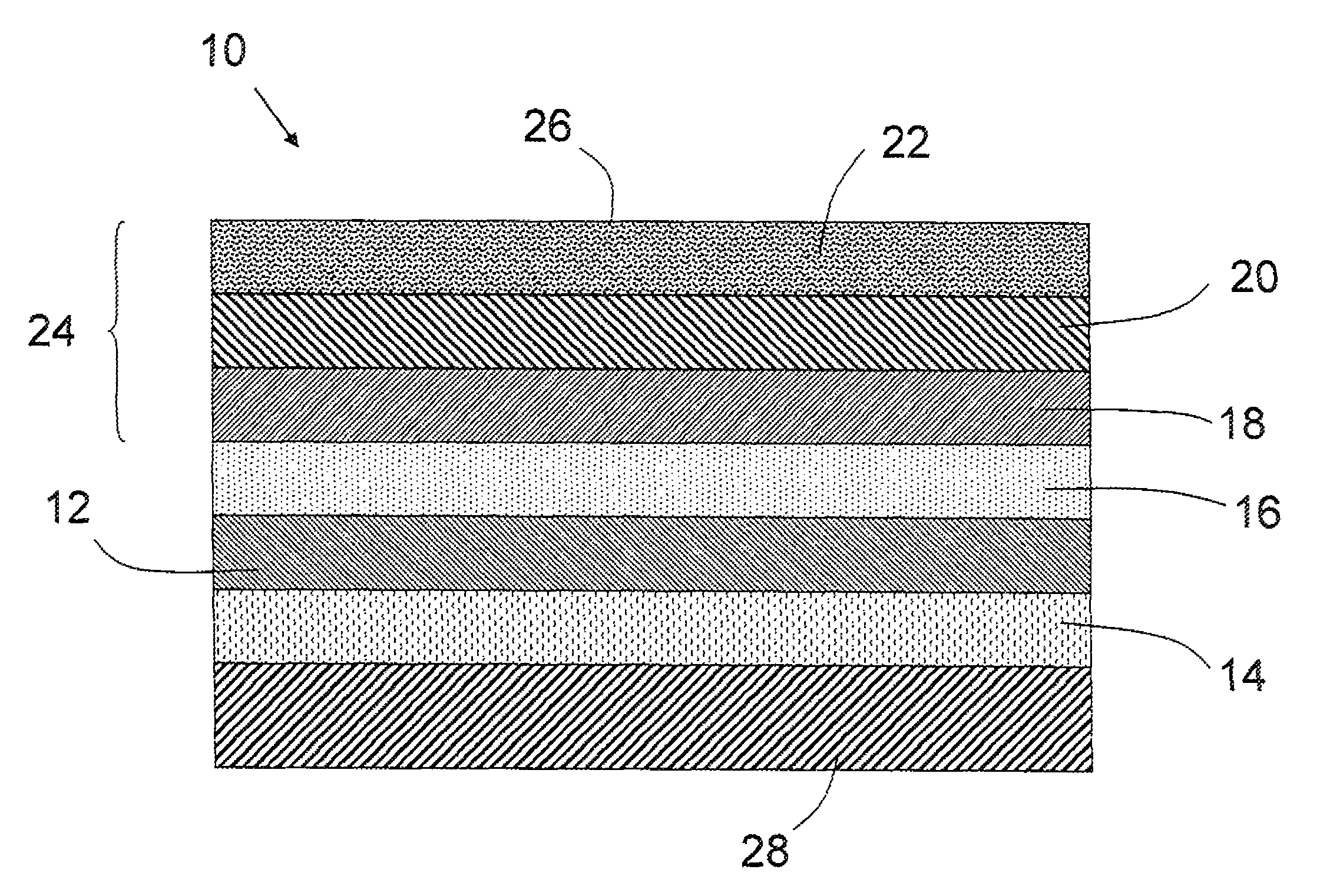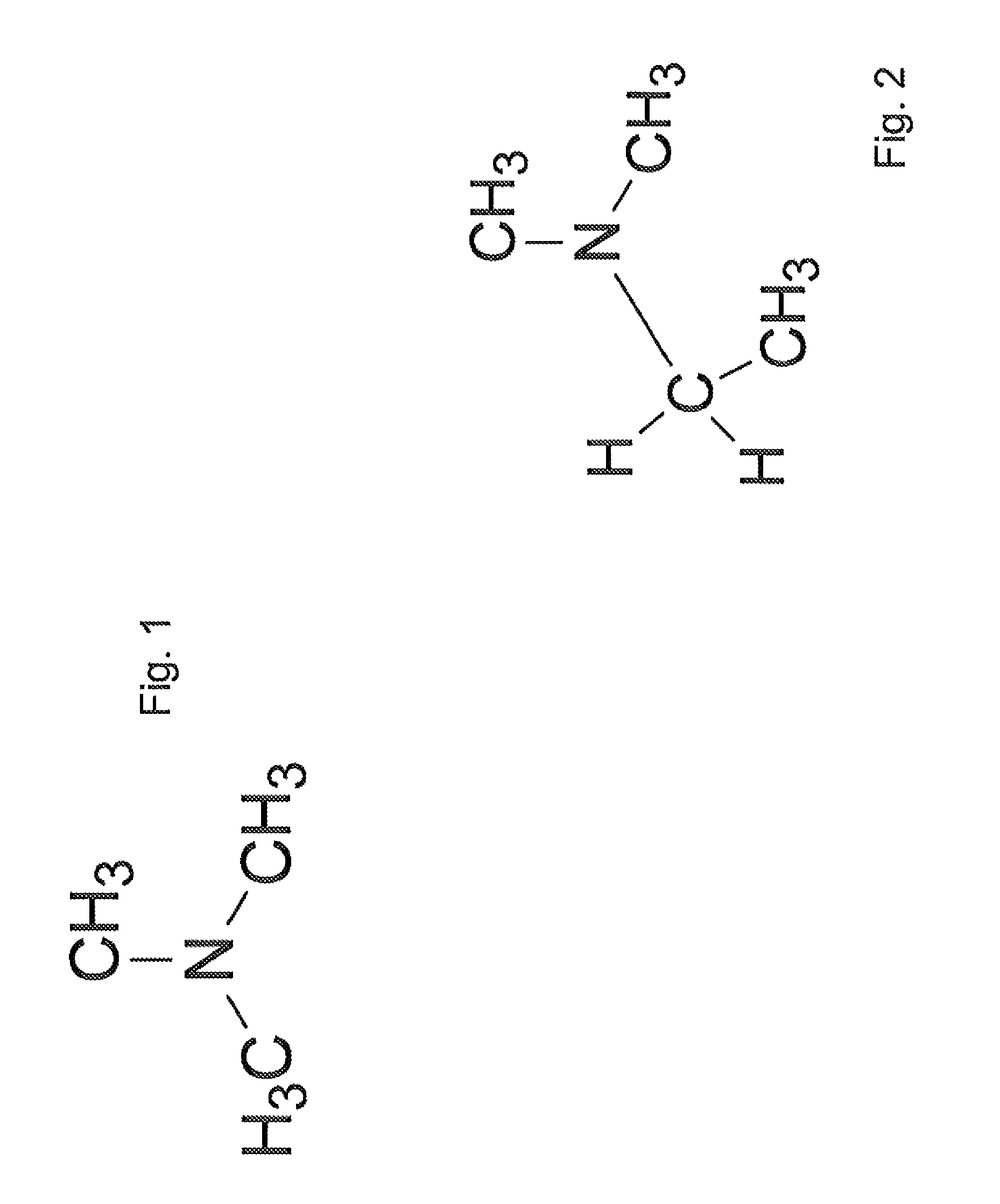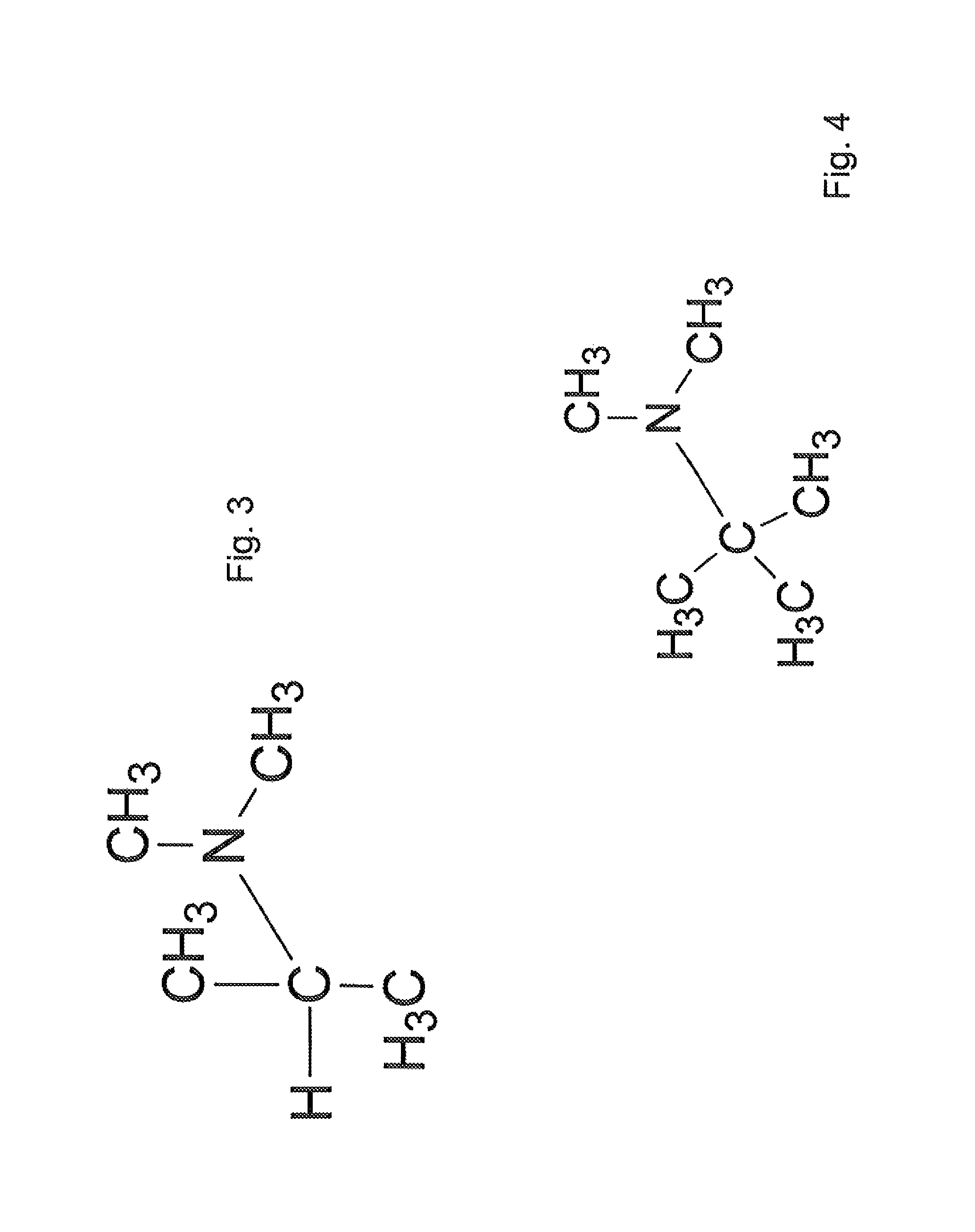Optoelectronic devices incorporating fluoropolymer compositions for protection
a technology of fluoropolymer composition and optoelectronic device, which is applied in the direction of semiconductor devices, photovoltaic energy generation, electrical equipment, etc., can solve the problems of reducing the mechanical performance of the polymer film, affecting the service life of the film, and the long-term requirements of the application of transparent polyolefins and poly(meth)acrylates, etc., to improve the ability to resist blackening, improve the service life, and improve weatherability characteristics
- Summary
- Abstract
- Description
- Claims
- Application Information
AI Technical Summary
Benefits of technology
Problems solved by technology
Method used
Image
Examples
example 1
[0106]The stability of UV absorbers in fluoropolymers is strongly affected by migration and degradation where degradation includes hydrolysis, oxidation, thermal and UV degradation. Generally, migration and degradation will happen together during most aging tests. Samples were evaluated by aging at 85° C. in water to assess accelerated aging conditions. It was expected that migration and hydrolysis would be important factors affecting the stability of UV absorbers in the fluoropolymers during this test. The samples are listed in Table 2:
[0107]
TABLE 2UVSampleFlouropolymerHALS (1%)Absorber (1%)ColorCommentsAEFEPT662T400WhiteExcellentweatherability.After 2000 h QUV-A, UV block effectdoes not dropsignificantlyBEFEPT662UV531WhiteAfter 1000 h QUV-A, UV block effectdecreased andtransmittanceincreased to 40%from below 1%CEFEPUV3529UV531BlackBlocks visible lightDEFEPChimasorbUV531BlackBlocks visible light944EEFEPUV5050UV531BlackBlocks visible lightFPVDFT662UV531WhiteAfter 1000 h QUV-A, UV bl...
example 2
[0109]The test results of this example suggest that UV and water exposure together have a significantly greater detrimental influence on the ability of the films with UV additives to block UV light than water exposure alone. In the QUV and Xenon arc aging chambers, the UV radiation combined with water and high temperature increased the rates of both migration and decomposition, and hence the ability of the films to block UV light.
[0110]FIGS. 9A and 9B show UV-vis spectra of UV531 in PVDF (9A) and EFEP (9B) before and after aging. A comparison with the 85° C. water aging is also shown in FIG. 9A. The UV blocking ability still remained after 85° C. water aging, but was lost after UV aging. The UV blocking ability almost completely disappeared after 1000 hours for EFEP and after 2000 hours for PVDF. This reveals that UV 531 either migrated and / or decomposed completely during aging. In order to determine the major mechanism(s) for loss of UV blocking, PVDF 1% UV531 films with and withou...
example 3
[0112]UV 2126 is a polymerized UV absorber with a MW of 50,000 g / mol. FIG. 10 shows the UV-vis spectra of 1% UV2126 in PVDF before and after QUVA testing. The data in FIG. 10 suggest that the stability of the high MW UV absorber was not good because some UV blocking property was lost after 1000 h of QUVA aging and significantly more was lost after 3000 h. A reasonable hypothesis is that chain cleavage of this polymerized UV additive occurred and hence migration significantly increased. It is also possible that UV2126 reacts with PVDF, oxygen or itself during UV radiation to generate colored species, as evidenced by the significant color change and the drop of the transmittance in visible range after aging.
PUM
| Property | Measurement | Unit |
|---|---|---|
| elastic modulus | aaaaa | aaaaa |
| visible light transmittance | aaaaa | aaaaa |
| UV light transmittance | aaaaa | aaaaa |
Abstract
Description
Claims
Application Information
 Login to View More
Login to View More - R&D
- Intellectual Property
- Life Sciences
- Materials
- Tech Scout
- Unparalleled Data Quality
- Higher Quality Content
- 60% Fewer Hallucinations
Browse by: Latest US Patents, China's latest patents, Technical Efficacy Thesaurus, Application Domain, Technology Topic, Popular Technical Reports.
© 2025 PatSnap. All rights reserved.Legal|Privacy policy|Modern Slavery Act Transparency Statement|Sitemap|About US| Contact US: help@patsnap.com



